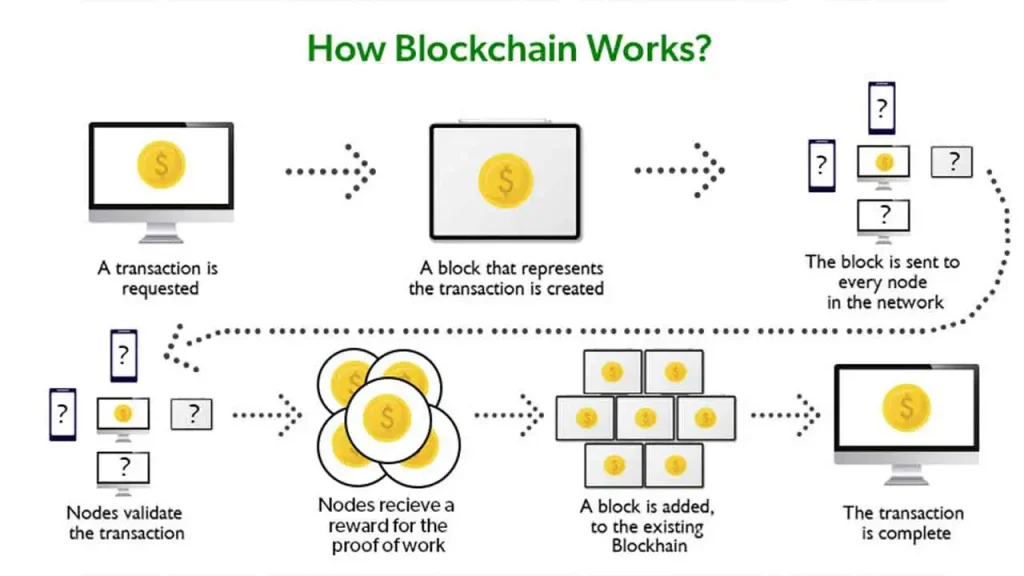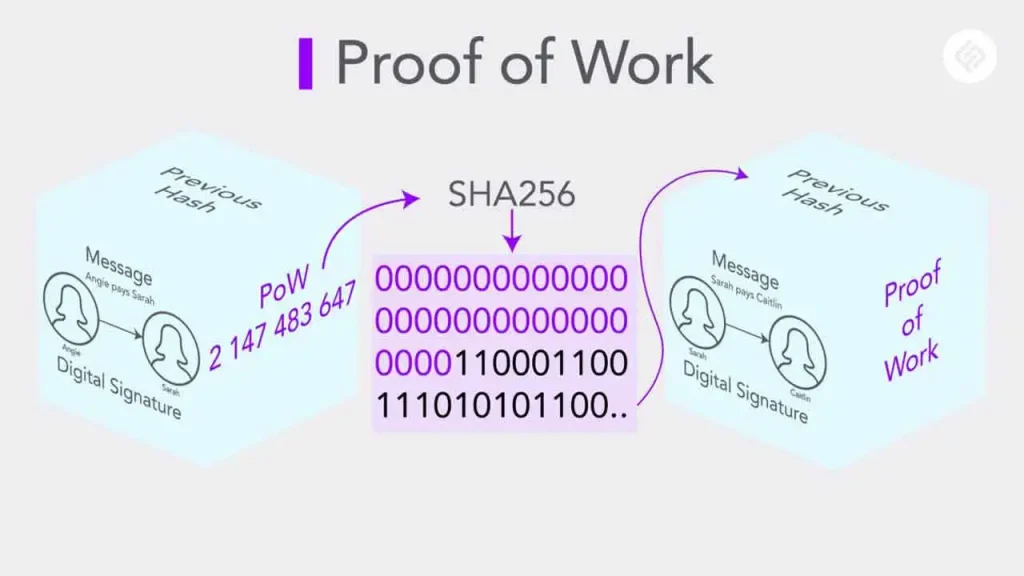How Work Blockchain Content Marketing – Responsibilities and Guides

Blockchain Content Marketing – The Best Way to Marketing of Cryptocurrency
Welcome to the future of marketing – Blockchain Content Marketing! In this beginner’s guide, we will delve into the fascinating world of blockchain technology and how it is revolutionizing the way businesses advertise their products and services.
But before we dive in, let’s address a burning question: How is blockchain content marketing different from other technologies? Well, get ready to explore the answers as we unravel the intricacies of this cutting-edge approach to advertising. So buckle up and prepare to discover why blockchain content marketing is poised to be one of the most effective strategies in 2024!
Blockchain Content Marketing -12 Most Effective Advertising Strategies in 2024
Blockchain Content Marketing is not just a buzzword; it’s a game-changer in the advertising landscape. As we look ahead to 2024, several strategies will undoubtedly dominate the blockchain content marketing space. 12 Collaborations & Partnerships – Teaming up with other reputable companies in the crypto space can expand your reach while adding credibility to your brand.
How is It Different From Other Technologies?
Blockchain technology stands out from other technologies due to its unique characteristics and capabilities. Unlike traditional technologies, blockchain is decentralized, meaning there is no central authority controlling the network. This decentralization ensures that no single entity has control over the data or transactions stored on the blockchain.
Another key aspect that sets blockchain apart is its transparency. All transactions recorded on the blockchain are visible to all participants in real-time. This transparency fosters trust among users as it allows for verification and auditing of transactions without relying on a third party.
Furthermore, blockchain technology offers enhanced security through cryptography. Each transaction recorded on the blockchain is encrypted using complex mathematical algorithms, making it virtually impossible to alter or tamper with the data once it has been added to a block.

Additionally, unlike traditional databases where data can be easily manipulated or deleted, information stored on a blockchain is immutable. Once a transaction is added to a block and confirmed by network participants through consensus mechanisms like proof-of-work or proof-of-stake, it becomes permanent and can’t be reversed.
Moreover, one of the standout features of blockchain technology is its ability to enable smart contracts – self-executing contracts with predefined rules embedded within them. These smart contracts automatically execute actions when specific conditions are met without requiring intermediaries or manual intervention.
What makes blockchain different from other technologies lies in its decentralization, transparency, enhanced security through cryptography, immutability of data records, and support for smart contract automation. These attributes make it an ideal solution for various industries beyond finance such as supply chain management, healthcare systems, voting systems, and many more!
How Does Blockchain Work?
In the world of technology, blockchain is often hailed as a revolutionary concept. But how exactly does it work? Let’s delve into the inner workings of this innovative technology. At its core, blockchain is a decentralized digital ledger that stores data across multiple computers or nodes. Each node in the network contains a copy of the entire blockchain, ensuring transparency and security.
When a new transaction occurs, it is grouped with other transactions into a block. This block is then added to the existing chain through complex mathematical calculations and algorithms. One key aspect of blockchain is its immutability. Once information has been recorded on the blockchain, it can’t be altered or tampered with. This makes it highly secure and reliable for various applications.

To ensure consensus among all participants in the network, different consensus mechanisms are used, such as Proof-of-Work (PoW) or Proof-of-Stake (PoS). These mechanisms validate transactions and maintain the integrity of the network.
Blockchain operates on principles of decentralization, transparency, and trustlessness. It has immense potential to transform industries beyond cryptocurrencies by enabling secure peer-to-peer transactions and streamlining processes across various sectors.
As we continue to explore this fascinating technology further in our blog post series on blockchain content marketing strategies, stay tuned for more insights on harnessing its power for your business growth!
What Does a Block Contain?
What does a block contain in the world of blockchain? Let’s dive into this fascinating topic.
A block in the blockchain contains several essential pieces of information. It includes a unique identifier known as the block header, which helps distinguish one block from another. The header typically consists of metadata such as the timestamp, version number, and a reference to the previous block.
Next, we have transactions. These are records of any digital asset transfers or interactions that occurred within a given period. Each transaction within a block is recorded using cryptographic principles to ensure its integrity and security.
Additionally, blocks may also contain other auxiliary data such as smart contract codes or tokens specific to certain blockchain platforms. This additional data enhances the functionality and versatility of blockchain technology.
One crucial element found within every block is the hash value. A hash acts like a digital fingerprint for each piece of data contained in the block. It is generated through complex mathematical calculations that create an alphanumeric string unique to that particular set of data.
A single block in a blockchain holds vital components like transaction records, metadata in its header, auxiliary data for enhanced functionality, and cryptographic hashes for ensuring security and immutability. Understanding what goes into a block can help unravel the inner workings and potential applications of this revolutionary technology!
What Is a Hash, and How Is It Calculated?
In the world of blockchain technology, a hash plays a crucial role in ensuring the security and integrity of data. But what exactly is a hash, and how is it calculated? Let’s dive into the details. A hash can be defined as a unique digital fingerprint or identifier that is generated by applying an algorithm to input data. This algorithm takes in any type of data, whether it’s text, numbers, or even an entire file, and converts it into a fixed-length string of characters.
To calculate this hash value, various mathematical operations are performed on the input data. These operations include complex calculations such as modulo arithmetic and bitwise logical operations. The result is a unique output that represents the original data but can’t be reversed to retrieve the original content.
One key property of hashes is their ability to produce different outputs for even small changes in input data. This property ensures that even minor alterations in the original information will result in completely different hash values.
The calculation process involves taking each block of data within the blockchain network and applying these hashing algorithms to generate its corresponding unique hash value. This value serves as proof that the block hasn’t been tampered with since any alteration would lead to an entirely different hash.
Hashes provide an additional layer of security within blockchain systems by allowing participants to verify transactions quickly and efficiently without revealing sensitive information about them. Understanding what a hash is and how it’s calculated enables us to grasp one fundamental aspect behind blockchain technology – its ability to ensure immutability, transparency, and trustworthiness through cryptographic methods.
Proof-of-Work
Proof-of-work (PoW) is a crucial concept in the world of blockchain technology. It serves as the underlying mechanism for validating and securing transactions on the blockchain network. In simple terms, PoW requires participants, known as miners, to solve complex mathematical puzzles to add new blocks to the blockchain.
Miners compete with each other to find a solution to these puzzles by using powerful computing resources. The first miner who solves the puzzle gets rewarded with newly created cryptocurrency coins. This process not only ensures that transactions are verified but also prevents double-spending and protects against malicious attacks.

The calculation of these mathematical puzzles involves a lot of computational power and energy consumption. However, this resource-intensive nature also makes it extremely difficult for anyone to manipulate or alter previously recorded data on the blockchain.
Despite its effectiveness in maintaining security and integrity within decentralized systems, there are ongoing debates about the environmental impact of PoW due to its high energy consumption requirements. Nevertheless, Proof-of-Work remains one of the fundamental building blocks of blockchain technology and continues to play a significant role in ensuring trust and reliability across various industries.
Blockchain Security
One of the key advantages of blockchain technology is its robust security features. Unlike traditional centralized systems, blockchain operates on a decentralized network where every transaction is verified and recorded by multiple participants or nodes.
The security of a blockchain relies on cryptographic algorithms that protect data integrity and ensure the authenticity of transactions. Each block in the chain contains a unique identifier called a hash, which is calculated using complex mathematical formulas.
To tamper with the information stored in a block, an attacker would need to alter not only that particular block but also all subsequent blocks, making it highly impractical and virtually impossible to manipulate the data without detection.
Future of Blockchain
The future of blockchain technology is an exciting and promising one. As more industries recognize its potential, we can expect to see widespread adoption and integration of blockchain into various sectors.
One area where blockchain is poised to make a significant impact is in the realm of finance. With its decentralized nature, transparency, and immutability, blockchain has the potential to revolutionize traditional banking systems. Transactions could be faster, more secure, and more cost-effective than ever before.

Another industry that stands to benefit from blockchain’s advancements is supply chain management. By utilizing smart contracts on a distributed ledger, companies can track products at every stage of production and verify their authenticity. This not only improves efficiency but also helps combat counterfeiting and ensures consumers are getting genuine goods.
Blockchain also has the potential to disrupt the healthcare sector. By securely storing patient data on a decentralized network, medical records can be easily accessed by authorized parties while maintaining privacy and security. This could streamline processes such as sharing information between healthcare providers or conducting clinical trials.
In addition to these specific applications, the overall impact of blockchain will likely extend beyond our current imagination. As developers continue to explore this technology’s capabilities and build innovative solutions upon it, new use cases will emerge across diverse industries.
The future of blockchain holds great promise for transforming how we conduct business, share information, and interact with digital assets. It’s an evolving landscape that presents countless opportunities for growth and innovation – all driven by this revolutionary technology known as blockchain.
Foster Ownership
One of the key aspects that sets blockchain technology apart from traditional systems is its ability to foster ownership. With blockchain, individuals have greater control and ownership over their data and assets.
In a world where our personal information is constantly being collected and monetized without our consent, blockchain offers a solution. Through decentralized networks, users can securely store their data and decide who has access to it.
Additionally, blockchain allows for the tokenization of assets. This means that physical assets like real estate or artwork can be represented digitally on the blockchain as tokens. These tokens can then be bought, sold, or traded transparently and securely.
By fostering ownership through decentralization and tokenization, blockchain empowers individuals to have more control over their digital lives. It shifts the power dynamics away from centralized authorities and puts it back into the hands of the people.
Eliminates Frauds and Fakes
Blockchain technology has the potential to revolutionize various industries, especially when it comes to eliminating frauds and fakes. Traditional systems are often prone to manipulation and dishonest practices, leading to significant losses for businesses and consumers alike. However, with blockchain’s decentralized nature and transparent ledger system, these fraudulent activities can be greatly reduced.
One of the key reasons why blockchain eliminates fraud is its immutability feature. Once a transaction is recorded on a block within the chain, it can’t be altered or tampered with without consensus from the entire network. This makes it extremely difficult for malicious actors to manipulate data or create counterfeit products.
Additionally, blockchain enables smart contracts that automatically execute agreements once certain conditions are met. These digital contracts are stored on the blockchain and provide transparency and trust between parties involved in a transaction. By removing intermediaries and relying solely on code execution, the risk of fraud or misrepresentation is significantly diminished.
Furthermore, due to its distributed nature, blockchain allows for real-time tracking of goods throughout their supply chains. This ensures that every step of production is accounted for and verified by multiple participants in the network. Consequently, this reduces opportunities for counterfeiting as authenticity can be easily validated using blockchain records.
Decentralization
Decentralization is a fundamental concept in blockchain technology that sets it apart from traditional centralized systems. In a decentralized network, no central authority or intermediary is controlling the flow of information or transactions. Instead, multiple nodes across the network validate and record each transaction, ensuring transparency and security.
One of the key benefits of decentralization is its ability to eliminate single points of failure. With no central server or entity to attack, hackers find it exceedingly difficult to compromise the system. This enhances the overall security and trustworthiness of blockchain networks.
Moreover, decentralization promotes inclusivity by allowing anyone with an internet connection to participate in the network. It gives power back to individuals and reduces dependence on centralized institutions for financial services or content distribution.
In addition, decentralized networks are resistant to censorship as they can’t be controlled by any specific entity. Information stored on a blockchain can be accessed by anyone with permission, preventing governments or corporations from manipulating data for their interests.
Furthermore, decentralization fosters innovation and collaboration as developers can build applications directly on top of existing blockchains without seeking approval from intermediaries. This opens up endless possibilities for creating new business models and disrupting traditional industries.
Decentralization lies at the heart of blockchain technology’s transformative potential. By distributing power and control among participants rather than concentrating it in one entity’s hands, blockchain enables greater security, inclusivity, transparency, and innovation across various sectors.
Blockchain-Based Advertising
Blockchain technology has the potential to revolutionize the advertising industry by providing transparency, security, and efficiency. With traditional advertising methods often plagued by ad fraud, lack of trust, and middlemen taking a significant cut, blockchain-based advertising offers a solution that benefits both advertisers and consumers.
One of the key advantages of blockchain-based advertising is transparency. Unlike traditional digital ads where it’s difficult to verify impressions and clicks, blockchain provides an immutable record of every transaction. Advertisers can have confidence in knowing that their ads are being seen by real users, while consumers can trust that they won’t be bombarded with fraudulent or irrelevant ads.
Another benefit is increased security. Blockchain technology ensures that data stored on the network can’t be tampered with or altered without consensus from multiple participants. This greatly reduces the risk of data breaches and unauthorized access to personal information.

Furthermore, blockchain-based advertising eliminates intermediaries such as ad networks and agencies, allowing for direct interactions between advertisers and publishers. This not only streamlines the process but also reduces costs associated with middlemen fees.
Additionally, blockchain enables more targeted advertising through its decentralized nature. Users have control over their data and can choose which personal information they want to share with advertisers. This allows for personalized advertisements tailored to individual preferences without compromising privacy.
The Role of Blockchain in Marketing
Blockchain technology has emerged as a game-changer in various industries, and marketing is no exception. Its decentralized nature and immutable characteristics make it an ideal tool for marketers to enhance transparency, security, and efficiency.
One of the key roles that blockchain plays in marketing is facilitating trust between businesses and consumers. With its tamper-proof ledger system, blockchain ensures the authenticity of data, preventing any form of manipulation or fraud. This increased transparency builds credibility for brands and strengthens customer relationships.
Moreover, blockchain allows marketers to target their audience more effectively by leveraging user data stored on the distributed network. By accessing accurate information about consumer preferences and behaviors, companies can tailor their marketing campaigns to deliver personalized experiences to customers.
In addition to improving data accuracy, blockchain also enables secure peer-to-peer transactions without intermediaries. Smart contracts powered by blockchain technology eliminate the need for middlemen such as banks or payment processors, reducing transaction costs while ensuring faster processing times.
Furthermore, blockchain’s decentralized structure eliminates single points of failure commonly associated with traditional centralized systems. This means that even if one node fails or gets hacked on the network, all other nodes continue operating normally—ensuring uninterrupted service for marketers.
By leveraging these unique features of blockchain technology, marketers can revolutionize advertising strategies by eliminating ad frauds and fakes prevalent in today’s digital ecosystem. Blockchain-based solutions provide transparent tracking mechanisms that verify ad impressions are genuine while protecting user privacy.
To stay ahead in this rapidly evolving landscape, businesses must embrace innovative technologies like blockchain to optimize their marketing efforts. By incorporating this transformative technology into their strategies now rather than later, they can gain a competitive edge and build stronger connections with their target audience.
How to Build a Successful Crypto and Blockchain Marketing Strategy?
When it comes to marketing your crypto and blockchain business, having a well-defined strategy is crucial. Here are some key steps to help you build a successful marketing strategy:
1. Define Your Target Audience: Before diving into any marketing initiatives, it’s important to understand who your target audience is. Are you targeting investors, developers, or general consumers? Knowing this will help shape your messaging and determine which channels to focus on.
2. Craft Compelling Content: Content plays a vital role in educating and attracting potential customers in the crypto space. Create informative blog posts, articles, videos, or even podcasts that provide value and highlight the benefits of your product or service.
3. Leverage Social Media Platforms: Utilize popular social media platforms like Twitter, LinkedIn, and Reddit to engage with the crypto community. Share relevant content regularly and participate in discussions to establish yourself as an industry thought leader.
4. Collaborate with Influencers: Partnering with influencers can significantly broaden your reach within the crypto community. Look for influencers who align with your brand values and have a genuine interest in cryptocurrencies or blockchain technology.
5. Attend Industry Events: Networking at industry events such as conferences or meetups provides an excellent opportunity to connect with potential customers and showcase your expertise. Consider sponsoring events or speaking engagements related to blockchain technology.
6. Incorporate SEO Strategies: Optimize your website for search engines by using relevant keywords throughout your content, and ensuring proper site structure. A strong SEO presence will increase organic traffic to your website.
7. Measure Results & Adapt: Continuously monitor the effectiveness of your marketing efforts through analytics tools. See what strategies are driving results, and make adjustments accordingly. Staying adaptable allows you to stay ahead of trends
Why Content is the Best Way to Market Your Crypto Business
In the fast-paced world of cryptocurrency and blockchain technology, content marketing has emerged as a powerful tool for promoting businesses in this industry. With its unique characteristics and wide reach, content marketing proves to be the best way to market your crypto business.
High-quality content allows you to establish yourself as an industry thought leader. By creating informative and insightful articles, blog posts, videos, or podcasts about cryptocurrencies and blockchain technology, you position yourself as an authority in the field. This not only attracts potential customers but also builds trust among your target audience.
Content marketing enables you to engage with your audience on various platforms. Whether it’s through social media channels like Twitter or LinkedIn, a well-crafted blog post, or an educational video on YouTube – quality content helps you connect with users across different mediums. This multi-channel approach ensures that your message reaches a wider audience.
Moreover, by producing valuable content that addresses common pain points or provides solutions to problems faced by crypto enthusiasts or investors, you can generate leads for your business. When people find value in what you offer through your content, they are more likely to subscribe to newsletters or sign up for services provided by your company.
Additionally, sharing original and relevant content consistently boosts brand visibility and recognition within the crypto community. Creating engaging infographics, hosting webinars featuring industry experts, or offering free e-books on blockchain-related topics further enhances brand awareness among potential customers.
FAQs
Closing Thoughts
As the world continues to embrace blockchain technology, it is clear that content marketing will play a crucial role in promoting and educating people about this innovative technology. Blockchain has the potential to revolutionize various industries by providing transparency, security, and decentralization.
By leveraging content marketing strategies, businesses can effectively communicate the benefits of blockchain to their target audience. Whether it’s through blog posts, videos, social media campaigns, or influencer collaborations, creating valuable and engaging content is key.
However, it’s important to remember that successful blockchain content marketing goes beyond just promoting products or services. It involves building trust with your audience by providing reliable information and addressing their pain points.
Embracing blockchain content marketing presents a significant opportunity for businesses operating in the crypto space. By adopting effective strategies that focus on delivering value-added educational material, fostering trust, and engaging with targeted audiences across multiple channels, the future looks promising for brands looking forward to harnessing this game-changing technology. So go ahead, and start exploring how you can leverage content marketing to successfully promote your crypto business in the world of blockchain!




